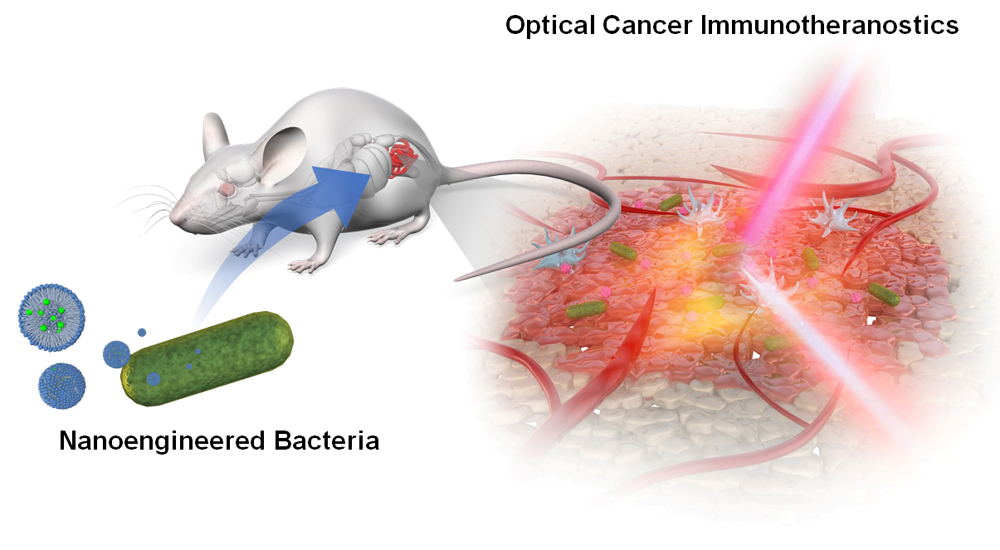Development of nanoengineered bacteria for cancer optotheranostics
Highlights:
- The optical nanoengineering of Bifidobacterium bifidum using nanoparticles encapsulating functional organic dye molecules has been explored.
- The nanoengineered bacteria exhibited unique multifunction in vitro and in vivo as an optically activatable immunotheranostic agent for cancer treatment.
Summary:
There is substantial interest regarding the understanding and designing of nanoengineered bacteria to combat various fatal cancerous diseases. However, conventional nanotechnological approaches adopt genetic manipulation for attenuating and improving the efficacy of bacteria. In addition, complicated chemical reactions were essential in the previous approaches.
Scientists at Japan Advanced Institute of Science and Technology (JAIST) have created a convenient method for development of nanoengineered bacteria for photothermal cancer immunotheranostics.
Discovered by Associate Professor Eijiro Miyako and his student Ms. Sheethal Reghu from JAIST, the synthesized ICG encapsulating Cremophor® EL (CRE) nanoparticles could be applied to non-pathogenic natural Bifidobacterium bacteria for its effective nanoconjugation for cancer optotheranostics using a biologically penetrable near-infrared (NIR) laser (Figure 1). Notably, nanoengineered bacteria can be easily prepared in only two steps, namely incubation and washing processes.
The optically activated functional nanoengineered bacteria exhibited unique optical absorbance and fluorescent properties, powerful photothermal conversion, high biocompatibility, excellent tumor selectivity, and strong anticancer efficacy. The NIR fluorescence from light-induced functional nanoengineered bacteria facilitated clear fluorescent tumor visualization, in association with bacterial tumor-targeting effect. Moreover, the powerful photothermal conversion of the functional bacteria could be spatiotemporally evoked by biologically penetrable NIR laser for effective tumor regression in mice, with the help of immunological responses. The present study demonstrates that an optical nanoengineering approach can provide the strong physicochemical traits and attenuation of living bacterial cells for cancer immunotheranostics.
The current experiments warrant further consideration of this novel theranostic approach for the treatment of refractory cancers. The team believes that the developed technology would advance cancer treatment for creating more effective medicine.
Paper titled "Nanoengineered Bifidobacterium bifidum with Optical Activity for Photothermal Cancer Immunotheranostics", published in Nano Letters, one of the world's top journals in the field of nanoscience and technology, DOI: 10.1021/acs.nanolett.1c04037
The work was supported by the Japan Society for the Promotion of Science KAKENHI Grant-in-Aid for Scientific Research (A) and the Uehara Memorial Foundation.

Figure 1. Schematic illustration of nanoengineered bacteria-based optical cancer
immunotheranostics.
February 21, 2022
